The picture on the right is Elgin Street in downtown Ottawa, Ontario, looking towards the Parliament Buildings from Queen Street. The Peace Tower can be seen in the background.
Of the names of the 495 communities and neighbourhoods that have been identified to date in the Ottawa-Gatineau urban area, 108 (21.8%) can be found as place names in Scotland or are based on Scottish or Ulster Scots family names. Of course, some of the names are used in other parts of the British Isles as well, but at least 62 (12.5%) of them are unique to Scotland or are readily identifiable with places in Scotland that are based on the same names. The percentage of neighbourhood names that are definitely Scottish or Ulster Scots is likely to be a little higher than 12.5% but, as this article demonstrates, it is difficult to determine, in the absence of definitive research into local family history, whether some of the names are ultimately of Scottish, Irish or English origin.
Communities and neighbourhoods with names that occur only in Scotland and not in other parts of the British Isles, and/or are definitely, or most probably, of Scottish origin are:
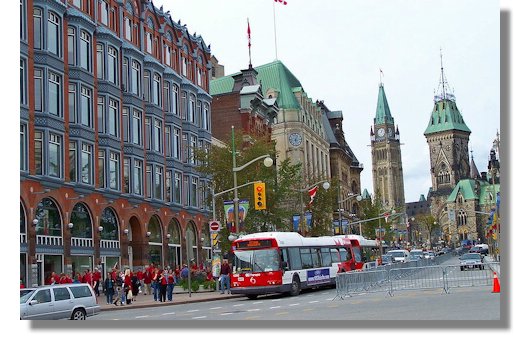
For comparability with other cities around the world, Greater Ottawa has been defined as embracing much of the recently enlarged City of Ottawa, together with Aylmer, Hull, Chelsea, Gatineau and Masson-Angers in Québec Province - an area known as the National Capital Region. Predominantly rural parts of the Cities of Ottawa and Gatineau have been excluded.
- Baie McLaurin / McLaurin Bay - The MacLarens or MacLaurins, 'sons of Lawrence', from the Gaelic MacLabhruinn, are an ancient Perthshire clan (Scarlett, 1975). The Gatineau neighbourhood is believed to be named after John McLaurin who started a sawmill in Templeton. His father, Alexander McLaren, came from Scotland to Glengarry County in 1815. John changed the spelling of his family name from McLaren to McLaurin (information posted to the Bytown genealogical website on January 19, 2013 by Blair McLaurin, a great-great-great-grandson of Alexander McLaren).
- Barrhaven, Barrhaven Mews and Barrhaven on the Green - although places with these names do not exist anywhere in the British Isles, there are numerous places in Scotland featuring Barr as an element in their names. Examples include the towns of Barr (Argyll & Bute and South Ayrshire), Barrhead (East Renfrewshire), Barrhill (South Ayrshire), Barrmill (North Ayrshire), Barr Burn (a water feature in Dumfries & Galloway) and many mountains and hills (Barr Dubh, Barr nan Cadhag, etc.). Barr is a Gaelic word meaning 'head, top, tip or summit'. Barr is also a Scottish and Northern Irish surname. Many Ottawans believe that Barrhaven is the name given by Mel Barr, the developer of the subdivision. In a personal communication received from Scott Bar, dated 7 March, 2010 it was confirmed that his grandfather, Melville Barr, did build and name the subdivision.
- Beaverbrook - The Kanata neighbourhood of Beaverbrook has a Scottish connection. It was named after Max Aitken, Lord Beaverbrook (Wikipedia article on Beaverbrook, Ottawa, retrieved in September 2013). William Maxwell "Max" Aitken, 1st Baron Beaverbrook (1879-1964), Canadian business tycoon, politician, and writer, was born in Maple, Ontario (near Keele Street and Major Mackenzie Drive), the son of a Scottish-born Presbyterian minister.
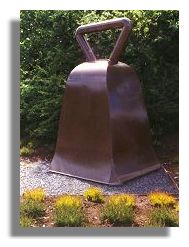
- Bell's Corners, Bell's Corners East, Bell's Corners Industrial, Bell's Corners Station, Bell's Corners West and Bells Junction. There are many places in Scotland with Bell as part of the name. The list is too numerous to quote fully, examples being Bell Bay in North Ayrshire, Bell Craig in the Scottish Borders and in Dumfries & Galloway and Bell Wood in Aberdeenshire. Bell is also a common Scottish surname, the family being a sept of Clan Macmillan. According to the article retrieved from Wikipedia in September 2013, Bell's Corners was named after Hugh Bell who owned a tavern in the area from 1834 to 1863. Hugh Bell was born in Ireland but his name suggests that his cultural heritage was Ulster Scots/Scots-Irish. The illustration shows the Celtic-style bell outside the Heather Garden in Perth sponsored by the Bell's Whisky brand.
- Bellwood (Midlothian). Since this neighbourhood is located between Bell's Corners and Bells Junction, there is the strong likelihood that its name was derived from Hugh Bell (see Bell's Corners above) rather than the village in Midlothian.
- Blackburn Hamlet - there is a Blackburn in Aberdeenshire, Scottish Borders, Dumfries & Galloway, Highland, Moray, South Lanarkshire and West Lothian. Although Blackburn is found just as commonly in northern England, the origin of the name of this neighbourhood in the Gloucester area of Ottawa is actually Scottish. Blackburn Hamlet took its name from Robert Blackburn, former Member of Parliament for Russell (Wikipedia article on Blackburn Hamlet, Ontario, retrieved in February 2007). Robert Blackburn (1828-1894) was born in Glasgow and came to Canada in 1842. He became a lumber merchant and partner in woollen mills. He was reeve of Gloucester Township, Ontario, in 1864 and Liberal MP for Russell from 1874 to 1878.
- Braemar Park - there are two places in Scotland with the name Braemar (in Aberdeenshire and the Shetland Islands). Braemar in Aberdeenshire is world famous as the venue for the annual Highland Gathering. Patronised by royalty, this Gathering is always held on the first Saturday in September and features a spectacle of highland dancing, pipe bands and highland sporting competitions (tossing the caber, stone putt etc).
- Bruce Farms - there are places called Brucefield in Clackmannanshire, Fife, Highland and West Lothian, Brucehaven in Fife, Brucehill in Aberdeenshire, West Dunbartonshire and Stirling, Bruceland in Moray, Bruceton in Perth & Kinross, Brucewells in Aberdeenshire and Bruce's Cave, Stone and Well in Dumfries & Galloway. Bruce is also found as an element in place names in England, but not nearly so commonly as in Scotland. Bruce is a Scottish surname of Norman origin, from the French town of Brix (Scarlett, 1975). The famous Robert the Bruce, victor of the battle of Bannockburn in 1314 which secured Scotland's independence, was crowned King of Scotland in 1306 in defiance of King Edward I of England.
- Carson Grove and Carson Meadows - there is a Carsons Hill and Carsons Stone in Dumfries & Galloway both based, presumably, on the Scottish family name Carson, the Carson family being a sept of Clan MacPherson. Leslie Lewis, in a communication posted to the Bytown genealogical website on June 2, 2005, believes that Carson Road (and therefore the neighbourhoods) may have been named after John (or Johnathon) Carson, a municipal office holder, whose name was mentioned in early censuses and on early maps for Gloucester, having immigrated in the 1820s with his family from Ireland. Whilst the link is thus primarily Irish, the names of these neighbourhoods can nevertheless be considered to be ultimately Scottish. Many neighbourhoods in Ottawa-Gatineau have essentially Scottish names even though the settlers concerned came from Ireland - a legacy, no doubt, of the 17th century Scottish plantation of Northern Ireland.
- Davidson Corner and Davidson Heights - there is a Davidson's Mains in the City of Edinburgh, also Davidson's Burn and Davidson's Linn over the border in Northumberland. The Davidsons are a branch clan of the Clan Chattan confederation (Scarlett, 1975).
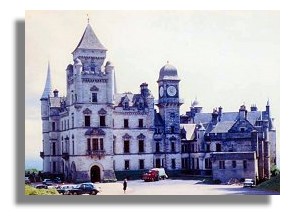
- Dunrobin, Dunrobin Heights and Dunrobin Shore - These semi-rural neighbourhoods presumably took their name from Dunrobin Castle (pictured here), the home of the Duke of Sutherland on the north-east coast of Scotland.
- Eagleson's Corners - Eagleson is a Scottish family name from Renfrewshire and originated during the 13th century in reference to inhabitants of the old barony of Eaglesham. John O'Neill, in a communication posted to the Bytown genealogical website, states that William Bell Eagleson, who was born in Ballymena, Ireland on 24 October 1826, came to Canada in 1852 and settled on a farm at what is now the corner of Hazeldean Road and Eagleson Road (i.e. Eagleson's Corners). After his death, his son Albert continued to operate the farm until he sold it in 1924. This is clearly an Ulster Scots name, i.e. a Scottish name taken to Northern Ireland. (Ballymena, in County Antrim, was a major area of Scottish settlement in the 17th century.)
- Forbes - the name of this neighbourhood in the east end of Ottawa is no doubt a reference to an individual bearing the Scottish surname of Forbes. The name dates back to 1292 when Alexander III granted land in Aberdeenshire to Duncan de Forbeys (Scarlett, 1975).
- Fraservale - there is a Fraserburgh in Aberdeenshire and a Fraserford in Dumfries & Galloway, both based on the Scottish surname of Fraser.
- Glen Cairn (Aberdeenshire and Highland, spelt Glencairn). Glencairn is also a district of Belfast, Northern Ireland, the name possibly having been taken there by Scottish settlers. The City of Kanata website provides the following information on the origin of the name of this neighbourhood which was created in the mid 1960s: "Dr. Alexander Christie, a Scotsman, was the first doctor to come to March Township. He lived on a farm on the first concession near the old Arnprior Road which he called Glen Cairn."
- Gleneagle - the name of this neighbourhood in Chelsea, Quebec is most probably based on Gleneagles, Perth & Kinross, a town famous for its golf course. Known originally as Summerlea, at some point in the mid 1930s the community's name was changed at the request of the Canadian Pacific Railways because Summerlea was already in use as a station name elsewhere in the CPR system. The Gatineau River Heritage Paddling web page provides the following explanation: "Jason Cross, who lived in the still standing large old farmhouse along the highway, was planning to build a small nine hole golf course. The chosen name of the course was to be Gleneagle, like the one in Scotland. The CPR liked this name and the area became known as Gleneagle." The website cautious, however, that this explanation has not been verified through other sources.
- Glenwood Park and Seigneurie Glenwood - there is a place called Glenwood in Aberdeenshire. This does not guarantee, of course, that the Aylmer neighbourhoods necessarily took their names from the Scottish village.
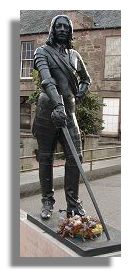
- Graham Park - there are many places in central and southern Scotland beginning with Graham, also a few just over the border in Northumberland and Cumbria. There were many powerful families bearing the family name Graham on both sides of the border. For instance, Sir John Graham of Dundaff, described as the "richt hand" of William Wallace, and John Graham of Claverhouse, Viscount Dundee, who gained the title of both "Bloody Clavers" and "Bonnie Dundee" (statue pictured here is of Viscount Dundee). And south of the border an entire sept of English Grahams was transported from Workington, Cumberland to Roscommon in Ireland in 1606 for proving troublesome on the border.
- Hazeldean and Katimavik-Hazeldean. There is a village in South Lanarkshire called Hazeldean.
- Heron Park and Herongate - According to the Dictionary of American Family Names, Heron is essentially an English or Irish family name. However, the name has travelled to Scotland over the years, as revealed by census figures in the 19th century cited by Ancestry.com. It is highly probable that the Ottawa neighbourhoods, both located on Heron Road, were named either for Gilbert Heron who arrived from Aberdeenshire, Scotland in 1834, or for one of his descendants or close relatives. The Heron family settled on land acquired in 1843 from Braddish Billings, an American after whom Billings Bridge was named (Bytown genealogical website).
- Highland Park - the name of this west side neighbourhood possibly recalls the Highlands of Scotland.
- Huntley and Huntley Manor Estates - these neighbourhoods in the former Township of West Carleton take their names from the historic township of Huntley which existed between 1841 and 1974. Judging by the following explanation given in the Wikipedia article on Huntley Township, Ontario, retrieved in September 2013, there appears to be a Scottish connection: "Huntley took its name from Huntly Castle, associated with Charlotte Lennox, Duchess of Richmond, whose husband Charles served as Governor General of British North America from 1818 to 1819." The Duchess of Richmond (born Lady Charlotte Gordon) inherited the Gordon estates, including Huntly Castle, after the death of her brother, Baron Gordon of Huntley in 1836. The spelling of the title Huntly seems to have changed to Huntley in 1784.
- Innes Park - there is an Innes Canal, Innes House, Innes Links and Innesmill, all in Moray. Innes is a Scottish family name, derived from the barony of Innes in Urquhart, Moray. The name is derived from 'innis', the Gaelic word for an island, since part of the barony was located on an island between two streams (Scarlett, 1975).
- Jardins Mackenzie King - there is a Mackenzie's Cairn in Highland based on this Scottish surname. This neighbourhood in the Hull area of Gatineau presumably honours William Lyon Mackenzie King (1874-1950), the tenth Prime Minister of Canada.
- Johnston's Corners - The Scottish family name of Johnston can be traced back to the second half of the 12th century when someone with the personal name John named his Annandale estate 'John's Toun' The family subsequently became a powerful border clan. Scarlett (1975) notes that not all Johnstons descend from the original Annandale family; the Johnstons of Caskiben, for instance, originated independently in the Mar district of Aberdeenshire and it is possible that others may have taken their surname from the city of Perth, formerly St. Johnstown. The Gloucester Historical Society website comments as follows on the origin of the name of this neighbourhood: "In the days of the pioneers, it was called Hardscrabble because the first settler, James Johnston, said he had a hard scrabble getting to his lot. He and his wife, Margaret Jane Groves, came to Canada from Northern Ireland.....The first religious service in the settlement was held on 27 January 1834 in the stone house of pioneer James Johnston. It was a baptismal service, with the Rev. John Cruikshank of St. Andrew's Presbyterian Church in Ottawa officiating. The above account strongly suggests that Johnston's Corners has an Ulster Scots ('Scots-Irish') connection.
- Kirks Ferry - there is a village in Highland called Kirk as well as several hundred other places, both in Scotland and in northern England, with Kirk in the name. Kirk is also a Scottish and northern English family name derived from northern Middle English 'kirk' meaning 'church' (itself derived from Old Norse 'kirkja'). The surname Kirk was therefore a topographic name for someone who lived near a church (Ancestry.com). The Bytown genealogical website page titled 'Some Pioneer Families of Hull, Quebec, Canada, and the Gatineau Valley' states that Kirk's Ferry was named for Thomas Kirk from County Londonderry, Ireland, who operated one of the first ferries in the district. As with many other place names in Ottawa-Gatineau, it can be assumed that this is fundamentally an Ulster Scots name.
- Leslie Park - there are places in Aberdeenshire and Fife called Leslie; also Lesliedale in the Orkney Islands. The Leslies emerged as a Scottish clan in the late 12th century when the barony of Leslie was created in Gairloch, Aberdeenshire, the clan taking its name from the town in Aberdeenshire.
- McArthur - there is a promontory called McArthur's Head on the Isle of Islay in Argyll & Bute. The MacArthur family is a branch of Clan Campbell, established in the late 14th century and a clan in its own right. McArthur is a neighbourhood in Gatineau, Quebec.

- McGregor Lake - there is a water feature based on this Scottish surname called Macgregor's Leap as well as a McGregor's Cave, both in Perth & Kinross. Rob Roy McGregor (his statue in Stirling is pictured here) was the infamous cattle rustler whose clan name was outlawed. McGregor Lake is a neighbourhood in Chelsea, Quebec.
- McKay's Waterfront - the McKays claim descent from the old Royal House of Moray. Clan MacKay began its rise to power in the 13th century, the name meaning 'son of fire' in Gaelic (Scarlett, 1975). This neighbourhood in the Torbolton area of Ottawa is quite possibly named for Thomas McKay (see New Edinburgh below).
- McKellar Heights and McKellar Park - the MacKellars are a sept of the Campbells of Argyll, and now have their own family tartan. One presumes that the names of these neighbourhoods in the Westboro area honour Archibald McKellar, a local resident during the 1840s. The Bytown genealogical website states the following: "Archibald McKellar ran a successful dairy farm [on the Billings Estate] until circa 1871 when he moved to Nepean where his name is better remembered (McKellar Park)."
- McLaren -this Gatineau neighbourhood was presumably named for the MacLaren/McLaurin family who were prominent in the local lumber industry in the early 20th century (see Baie McLaurin above).
- McLeod - an ancient Scottish clan of Norse origin whose ancestral seat is Dunvegan Castle on the Isle of Skye. McLeod is a neighbourhood on McConnell-Laramée Boulevard in Aylmer, Quebec.
- New Edinburgh - the neighbourhood was established in 1829 by Thomas McKay (1792-1855) and was named for the capital city of his native Scotland (article on New Edinburgh, retrieved from Wikipedia in March 2006). McKay was born in Perth, Scotland and immigrated to Canada in 1817. A prosperous businessman, he was one of the founders of Ottawa through his involvement in the construction of the Rideau Canal system of locks. As pointed out in the Wikipedia article, the streets in the neighbourhood were named after members of McKay's immediate family. The Governor General of Canada's residence is located in this select Ottawa neighbourhood.
- Patterson - Patterson is a variant spelling of the Scottish family name of Paterson ('Patrick's son'). The Paterson clan was originally located on the north side of Loch Fyne in Argyll. Patterson, according to Black (1996), is one of the most common family names in Scotland. The neighbourhood in Chelsea, Quebec was probably named for an early settler. For instance, in the Quebec Heritage Web webpage on the Lower Gatineau Heritage Trail, author Dwane Wilkin states that "Patterson's General Store at 740 Riverside Dr. (circa 1880), now a gift shop, retains much of its original interior" while the Gatineau River Heritage Paddle web page mentions the farm (now submerged) owned by pioneer farmer and school teacher James Patterson. Given the strong Irish presence in the Lower Gatineau area in pioneering days, the Patterson family could well have been Ulster Scots.
- Peter's Point - there is a case for regarding the name of this Chelsea neighbourhood as having a link with Scotland, albeit indirect. The Gatineau River Heritage Paddle web page provides the following explanation: "Few are aware of the origin of its name. In fact, it's surprising to learn that "Peter" was a woman, born Alice Mercer [died 1951]. As a young child she was apparently very taken with James Barrie's "Peter Pan". Her passion for the mythical boy was so strong that everyone began to call her Peter, and Peter she remained her entire life." The creator of the Peter Pan character, J.M. Barrie (1860-1937), was born at Kirrimuir, Angus, Scotland.
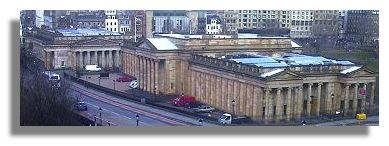
- Playfair Park - There do not appear to be any place names in Scotland or in the rest of the UK that are based on the name Playfair. The name nevertheless has a strong connection with Scotland, particularly through William Henry Playfair, architect of many Edinburgh buildings including the National Gallery of Scotland (see above), and his uncle, John, mathematician and geologist. William assisted another Scottish architect, C.R. Cockerell, in the design of Edinburgh's prominent National Monument to the Napoleonic Dead, designed as a folly and based on the Acropolis in Athens. The Ottawa neighbourhood was established in 1964.
- Queensway, Queensway Terrace North and Queensway Terrace South - there is a place in Fife called Queensway. These west end neighbourhoods take their name from Queenway highway (Ottawa's main east-west arterial), near which they are situated, rather than the village in Scotland. The highway is part of the King's Highway (Highway 417) and was built between 1957 and 1966. It was named for Queen Elizabeth II, who is part-Scottish through her maternal grandparents, the Earl and Countess of Strathmore and Kinghorne. The article on Ontario Highway 417, retrieved from Wikipedia in September 2013, provides the following explanation: "With the rail lines removed, construction of the new expressway got underway in 1957 when Queen Elizabeth visited Ottawa to open the first session of the 23rd Parliament. On October 15, the Queen detonated dynamite charges from the Hurdman Bridge, which now overlooks the highway as it crosses the Rideau River, and formally dedicated the new project as the Queensway."
- Ramsayville - there is a Ramsay Ness in the Orkney Islands. This Lowland family name goes back to the 12th century, and is believed to have been derived from a local name in Huntingdonshire, England, whence the progenitors of the Scottish Ramsay's are said to have come (Scarlett, 1975). The Chambers Biographical Dictionary (Thorne & Collocott, 1974) lists a number of prominent Ramsay's, including James Andrew Broun-Ramsay, Marquis of Dalhousie (1812-1860), who has been styled 'the greatest of Indian pro-consuls'.
- Stewart Farm - there is a Stewarton in Argyll & Bute, Scottish Borders, East Ayrshire and Dumfries & Galloway plus numerous other place names throughout Scotland and parts of England and Northern Ireland that are based on the Scottish surname of Stewart. The Stewarts/Stuarts are descended from a Breton, Alan Fitzflaald, the crown of Scotland being brought to his descendants by Walter (1293-1326), fifth Steward of Scotland, whose son became King Robert II. The last of the Royal Stuarts was Queen Anne (1665-1714).
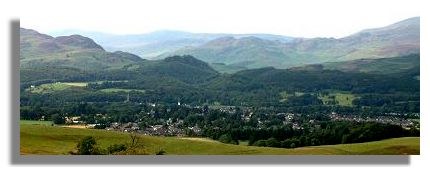
- Strathearn (a valley in Perth & Kinross). The illustration above shows the village of Comrie in Strathearn.
- The Glebe - there are places called 'Glebe' in the Scottish Highlands, Orkney Islands and Shetland Islands but Glebe is found just as commonly in both England and Ireland. Glebe is an Old English word for land put aside for church use. In the case of the Ottawa neighbourhood, the name has an indirectly Scottish connection since it refers to "the glebe lands of St Andrew's Presbyterian Church." According to the article retrieved from Wikipedia in September 2013, real estate agents began to refer to these lands simply as "The Glebe" when they were opened for residential development in 1870.
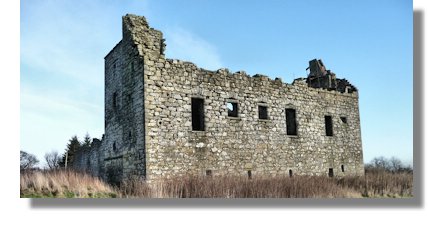
- Torwood Estates - as a place name in the British Isles, Torwood seems to be found only in the Scottish lowlands (Torwood in Dumfries & Galloway and in Falkirk; also Torwoodlee in the Scottish Borders). The graphic on the right is Castle Torwood near Falkirk.
- Watterson Corners - Watterson is a Scottish and northern Irish family name; it is a patronymic name from an altered form of the personal name Walter, and is related to Waterson (Ancestry.com).
Some of the following neighbourhoods could prove on further investigation to have a link with Scotland.
- Baskin's Beach - Baskin is a Scottish family name originating in the former county of Banffshire. According to Ancestry.com, citing the Dictionary of American Family Names, Baskin could also be of Jewish origin (from the Ukraine or Belarus), a name derived from the pet form of the Biblical name Bath Seba. In a communication posted to the Bytown genealogical website by Venetia Moorhouse in April 2010 it was stated that there was a lighthouse keeper in Torbolton named William "Big Bill" Baskin. It is thus very likely that Baskin's Beach has a Scottish connection.
- Beattie Point - The Internet Surname Database classifies Beattie as a 'border' name since "it is found equally in the counties on either side of the boundary between Scotland and England."
- Boyce - According to the Dictionary of American Family Names, Boyce is a northern English, Scottish or Northern Irish surname derived from Old French 'bois' ('wood'), signifying someone who lived in or near a wood. Alternatively, the name could be of Middle English origin from the Old English personal name Boia, or an anglicised form of the Irish Gaelic Ó Buadhaigh, or French Bois. One wonders whether the name of the outlying community of Boyce is in any way connected with two former reeves of Nepean (John Boyce, serving between 1890 and 1893 and George Boyce, between 1896 and 1897). In a SlideShare website on the history of Nepean, mention is made of a school teacher called George Boyce: "One of the first certified school teachers was John Boyce who came from County Armagh, Ireland. Relatives in Nepean wrote to him telling him about the opportunities for school teachers. He taught at Hartwells Locks for 7 years and then came to teach in a little log schoolhouse at Merivale Corner in 1859. (http://www.slideshare.net/jenniferjilks/history-of-nepean-ontario)
- Burnet - a corrupted spelling of the Scottish and English family name derived from Old French burnete, a diminutive of brun 'brown' (Dictionary of American Family Names). The Gatineau River Heritage Paddle web page provides the following commentary on the origin of the name of this locality near Chelsea: "Named after one of its first farming residents, Burnett is also a major road in the area leading down to the river......Burnett's official name on maps is "Burnet," with only one "t". Local legend has it that this arose when the name of the stop was painted on the roof of the Burnett station, a standard practice; the painter miscalculated and ran out of room for the second "t". This was never corrected."
- Craig Henry - this name has a mild Scottish ring to it, mainly because of the name 'Craig'. As a family name, however, Henry is far more likely to be Irish, English or American than Scottish. The neighbourhood was developed by Jack Aaron on land previously belonging to the Craig Henry farm (Wikipedia article on Craig Henry, September 2013). The Bytown genealogical website mentions "Bower Henry's farm".
- Dow's Lake - there are several places in Dumfries & Galloway with Dow as an element in the name (Dow Craig Hill, Dow Loch, Dow Lochar, Dow Lochs and Dow Spout); also Dow Hill and Dow's Burn in South Ayrshire. Dow is also found in place names over the border in Cumbria and in other parts of England. Ancestry.com, quoting the Dictionary of American Family Names, suggests several origins of Dow as a family name: "Scottish (also found in Ireland): reduced form of McDow. This surname is borne by a sept of the Buchanans. English: variant of Daw. Americanized spelling of Dutch Douw, an Old Frisian personal name. Americanized spelling of German Dau." (Ancestry.com). The Ottawa neighbourhood takes its name from the lake in the area. The lake, in turn, "was named after Abram Dow who owned land in this area in 1816." (Wikipedia article on Dow's Lake, September 2013). The Bytown genealogical website mentions early settlers named Abram and Samuel Dow in relation to the Billings Bridge Settlement.
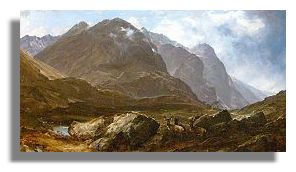
- Glen South - there are places called Glen in Dumfries & Galloway, East Ayrshire, North Ayrshire, Orkney Islands and Shetland Islands, as well as at least two places in Ireland. Glen simply means 'valley' in Gaelic (gleann).The picture on the right is of Glencoe.
- Kilroy Crescent - there is a place called Kilroy in Dumfries & Galloway. As a family name, Kilroy is related to the Scottish surnames of MacGilroy and Macilroy. It seems, however, to be also related, quite independently, to the Ulster surnames of McElroy, McElree and McElrea. Consequently the name Kilroy could be of Scottish, Ulster Scots or native Irish origin. Kilroy Crescent is a neighbourhood in Aylmer, Quebec.
- Lees Avenue - According to Ancestry.com, citing the Dictionary of American family names, the surname Lees could be Scottish, English, Irish or even Dutch. The Scottish family name was derived from three separate sources: Middle English 'lees' ('fields'), a reduced form of Gillies, or a reduced and altered form of MacLeish. All three families (Lees, Gillies and MacLeish) are entitled to wear the MacPherson tartan.
- Morgan's Grant - Morgan is a Scottish family name, the family forming a sept of Clan MacKay. Morgan, however, is also a very common Welsh family name (Morganstown is a suburb of Cardiff in the former Welsh county of Glamorgan) and the name has been taken to England as well, probably by the Welsh Morgans, e.g., Morgan's Hill in Wiltshire. There is a strong probability that the Kanata subdivision of Morgan's Grant has neither a Scottish nor a Welsh connection since it was named after William Morgan, a member of the Talbot party of settlers from Tipperary, Ireland (Bytown genealogical website). Of course, William Morgan's ancestry may have been either Scottish or Welsh.
- Rockcliffe Park and Rockcliff Manor Park - there is a Rockcliffe in Dumfries & Galloway as well as in three English counties. Rockcliffe Park, with its many mansions, is Ottawa's premier neighbourhood. "The name for the Village was taken from its first house, "Rockcliffe", built by Duncan Rynier MacNab, and completed before his death in 1837." (Rockcliffe Park Residents Association website). Stornoway, the residence of the Leader of the Opposition in the Canadian parliament, is located in this neighbourhood. The residence was built by architect Alan Keefer in 1914 for Ottawa grocer Asconio J. Major and was given the name "Stornoway" by the second occupant, the Perley Robertsons, after the ancestral home of the Perley family in the Outer Hebrides in Scotland (Wikipedia article on Stornoway residence, retrieved in February 2009).
- Smith Ridge Meadows - Smith is the most common surname in both Scotland (where there is a family tartan) and England; it is also the 5th most common surname in Ireland and 13th in Wales, according to surveys undertaken in the 1970s.
- Taylor Creek Business Park - Taylor is a very common surname in both Scotland and England. A survey of surnames undertaken in the 1970s suggests, however, that it is the 5th most common surname in England compared with the 14th in Scotland. The Scottish Taylor family is a sept of Clan Cameron but now has its own family tartan.
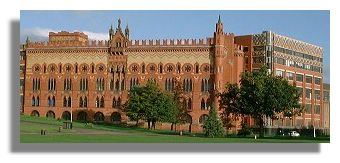
- Templeton, East Templeton and West Templeton - as a place name, Templeton can be found in Scotland (in Aberdeenshire, Angus and South Ayrshire) as well as in England and Wales. The illustration here shows the Templeton Carpet Factory in Glasgow (yes, a carpet factory designed to look like the Doge's Palace in Venice). Templeton is also a family name. In the Ancestry.com website it is stated that Templeton is a "habitational name from a place near Dundonald in Ayrshire, so called from Middle English temple 'house of the Knights Templar' + toun 'settlement'. There are also places called Templeton in Wales, Berkshire and Devon, but these do not seem to have contributed to the surname." (Ancestry.com). No information has been found on the origin of the names of these neighbourhoods in Gatineau, Quebec but should they be attributable to an early settler, a Scottish connection seems highly probable.
A third category of neighbourhood and suburban names comprises places that definitely exist in Scotland, but the likelihood that the Ottawa-Gatineau counterpart was named for Scotland, even indirectly, is greatly diminished because these names are also commonly associated with other parts of the British Isles. None of these names looks or sounds particularly Scottish.
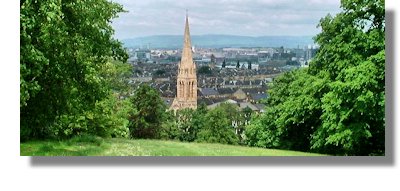
A final category of neighbourhood and suburban names comprises places that can be found in Scotland but which, in the case of Ottawa-Gatineau, definitely or most probably have no Scottish connection.
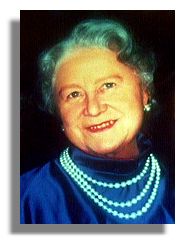
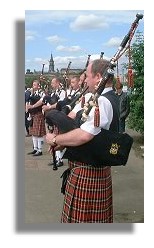
Baie McLaurin, Jardins Mackenzie King and Seigneurie Glenwood are particularly interesting names since they represent the kind of Scottish-French fusion of place name elements that can be expected in a bilingual country. Scottish place names, as this article illustrates, can be found in both the predominantly Francophone (Gatineau, Quebec) and predominantly Anglophone (Ottawa, Ontario) areas, a legacy of the early colonisation of both sides of the Ottawa River by Scottish and Scots-Irish settlers. An account of early Scots settlement in the area is provided in the Bytown website, on a web page titled "Emigration from Scotland to the Ottawa, Canada area in the 1800's to Glengarry County, Ontario and Lanark County, Ontario also Scottish Settlement on Indian Lands in 1815 in Glengarry County, Ontario, Canada" (http://www.bytown.net/scots.htm)
Acknowledgments:
- Bytown genealogical website
- Black, George F. (1996). The Surnames of Scotland. (Birlinn Ltd, Edinburgh).
- City of Kanata
- Eastern Ontario, 1989 (Allmaps Canada Limited, Markham, Ontario).
- Gatineau River Heritage Paddle: A Guide (2nd Edition)
- Gloucester Historical Society
- Google Maps for the names of recently established neighbourhoods.
- The Internet Surname Database
- Ottawa-Hull Street Map, 1996 (MapArt Publishing, Oshawa).
- Quebec Heritage Web: Lower Gatineau Heritage Trail h(ttp://www.quebecheritageweb.com/attraction/lower-gatineau-heritage-trail)
- Rockcliffe Park Residents Association (http://www.rockcliffepark.ca/history.html_)
- Scarlett, James D. (1975). The Tartans of the Scottish Clans. (Collins, Glasgow and London).
- Thorne, J.O. & Collocott, T.C. (Editors) (1974). Chambers Biographical Dictionary (Revised Edition). (W & R Chambers, Edinburgh).
- Wikipedia sites on Ottawa, Gatineau and Chelsea Neighbourhoods.
- Websites, place name gazetteers and published Ordnance Survey maps of British and Irish cities, towns, villages and counties.
© Ian Kendall
If you wish to contact Ian about his research, his e-mail address is ian.kendall1@bigpond.com.
Melbourne, Australia, September 2004 (Revised, November 2013)



